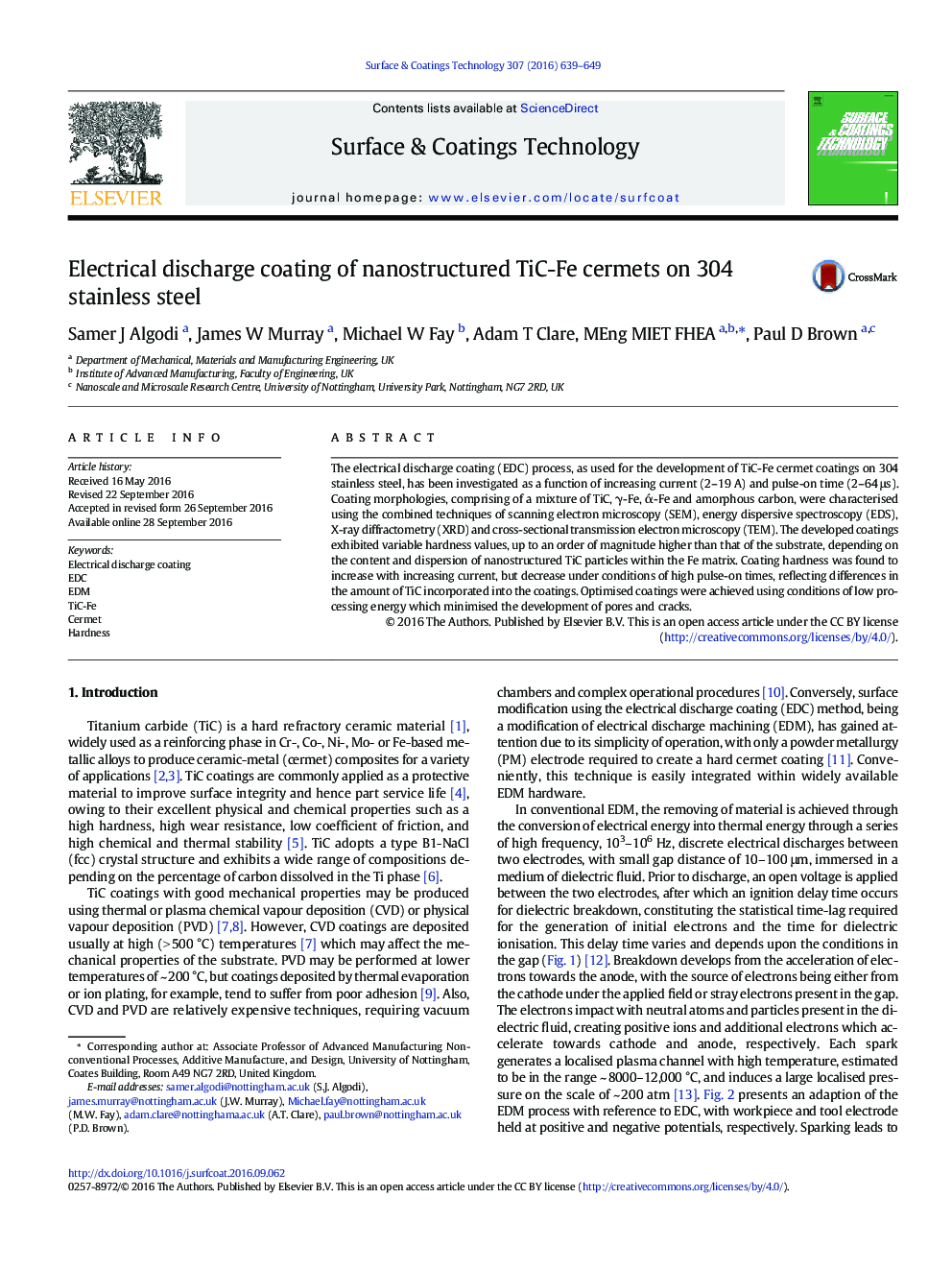| Article ID | Journal | Published Year | Pages | File Type |
|---|---|---|---|---|
| 6481479 | Surface and Coatings Technology | 2016 | 11 Pages |
â¢ED coating using a TiC electrode onto steel results in formation of a TiC-Fe cermet.â¢Hardness varies with process conditions, and is related to Ti content.â¢Hardness reaches an order of magnitude higher than substrate.â¢Overprocessing results in TiC dilution and void/crack formation.
The electrical discharge coating (EDC) process, as used for the development of TiC-Fe cermet coatings on 304 stainless steel, has been investigated as a function of increasing current (2-19 A) and pulse-on time (2-64 μs). Coating morphologies, comprising of a mixture of TiC, γ-Fe, ά-Fe and amorphous carbon, were characterised using the combined techniques of scanning electron microscopy (SEM), energy dispersive spectroscopy (EDS), X-ray diffractometry (XRD) and cross-sectional transmission electron microscopy (TEM). The developed coatings exhibited variable hardness values, up to an order of magnitude higher than that of the substrate, depending on the content and dispersion of nanostructured TiC particles within the Fe matrix. Coating hardness was found to increase with increasing current, but decrease under conditions of high pulse-on times, reflecting differences in the amount of TiC incorporated into the coatings. Optimised coatings were achieved using conditions of low processing energy which minimised the development of pores and cracks.
